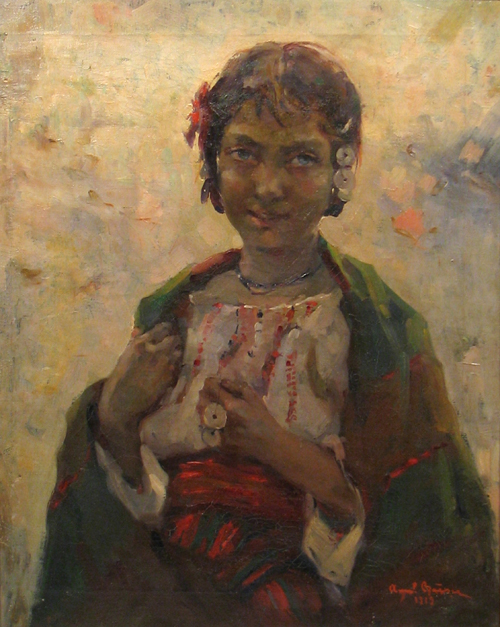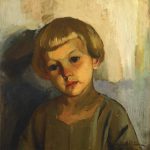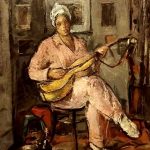
Aurel Baesu, a Romanian painter whose name might not resonate as loudly in the global art scene as some of his contemporaries, has nonetheless made significant contributions to the rich tapestry of 20th-century art. Among his works, “Tiganca” (The Gypsy Woman) stands out as a testament to his skill, sensitivity, and unique perspective on capturing the essence of Romanian cultural and social life. This article delves into the artwork “Tiganca,” exploring its creation, themes, and significance within Baesu’s oeuvre and Romanian art.
Background of Aurel Baesu
Before diving into “Tiganca,” it’s crucial to understand the artist behind the canvas. Aurel Baesu was born in 1896 in Romania, a time of great cultural and political change. He pursued his artistic studies at the Bucharest National University of Arts, where he was influenced by the prevailing trends of European art, as well as the rich cultural heritage of Romania. Baesu’s work, characterized by its lyrical realism and attention to the nuances of human expression and natural landscapes, reflects a deep connection to the Romanian soul.
The Artwork: “Tiganca”
“Tiganca” is a captivating piece that showcases Baesu’s mastery of color and form. The painting portrays a Roma woman, a subject often marginalized in society, in a manner that is both dignified and profoundly human. Baesu’s choice of subject speaks to his interest in the lives of ordinary people, as well as his desire to capture the diversity of Romanian society.
Composition and Technique
The composition of “Tiganca” is straightforward yet powerful. The woman is depicted in three-quarter view, her gaze slightly averted, which invites viewers to ponder her thoughts and feelings. Baesu’s technique, with its loose, expressive brushstrokes, conveys not just the physical likeness of the woman but also a sense of her inner life and resilience. The background is minimally detailed, focusing the viewer’s attention on the subject and her vibrant attire, which is rendered with a rich palette of colors that symbolize the vitality and spirit of the Roma culture.
Themes and Interpretations
“Tiganca” is rich in themes and possible interpretations. On one level, it is a portrait of individual dignity and grace. On another, it can be seen as a commentary on the social position of the Roma in Romanian society, highlighting both their marginalization and their indomitable spirit. Additionally, the painting reflects Baesu’s broader interest in exploring the human condition, particularly the experiences of those living on the fringes of society.
Significance in Baesu’s Oeuvre
“Tiganca” occupies a special place in Baesu’s body of work. It exemplifies his commitment to realism and his ability to convey profound emotional depth and social commentary through his art. Moreover, the painting stands as a bridge between traditional Romanian art and the modernist trends that were beginning to influence Romanian painters in the early 20th century. Baesu’s work, including “Tiganca,” is a testament to his belief in the power of art to reflect and elevate the human spirit.
Cultural and Social Impact
The impact of “Tiganca” extends beyond the confines of the art world. It has become an important piece in the conversation about the representation of marginalized communities in art. By portraying a Roma woman with dignity and complexity, Baesu challenges stereotypes and invites viewers to reconsider their perceptions of the Roma people. In this way, “Tiganca” contributes to a broader understanding of cultural diversity and social inclusion.
Legacy and Continuing Relevance
Aurel Baesu’s “Tiganca” remains relevant today, not only as a piece of Romanian cultural heritage but also as a work of art that speaks to universal themes of dignity, identity, and the beauty of human diversity. Its continuing appeal lies in its ability to connect with viewers on an emotional level, inviting reflection on the lives of others and our shared humanity.
In conclusion, “Tiganca” by Aurel Baesu is more than just a portrait. It is a window into the soul of a community often relegated to the margins of society and a reflection on the role of art in social commentary. Through this painting, Baesu has left a lasting legacy that continues to inspire and challenge, proving that art has the power to transcend boundaries and speak to the essence of what it means to be human. As we look at “Tiganca,” we are reminded of the richness of Romanian culture, the complexity of human emotions, and the enduring power of empathy and understanding.






